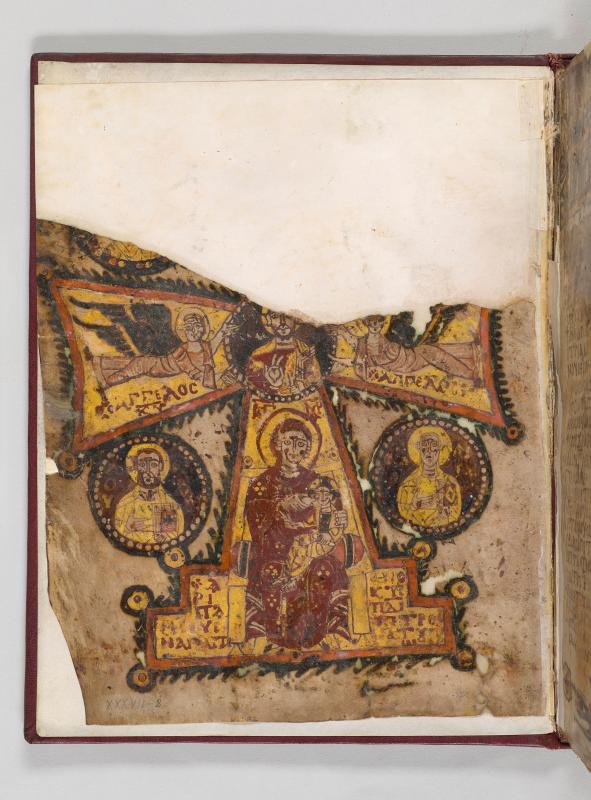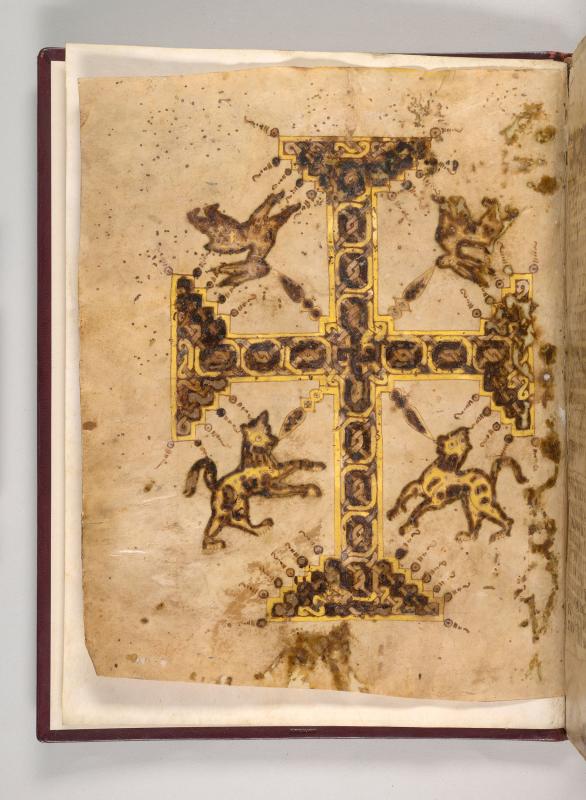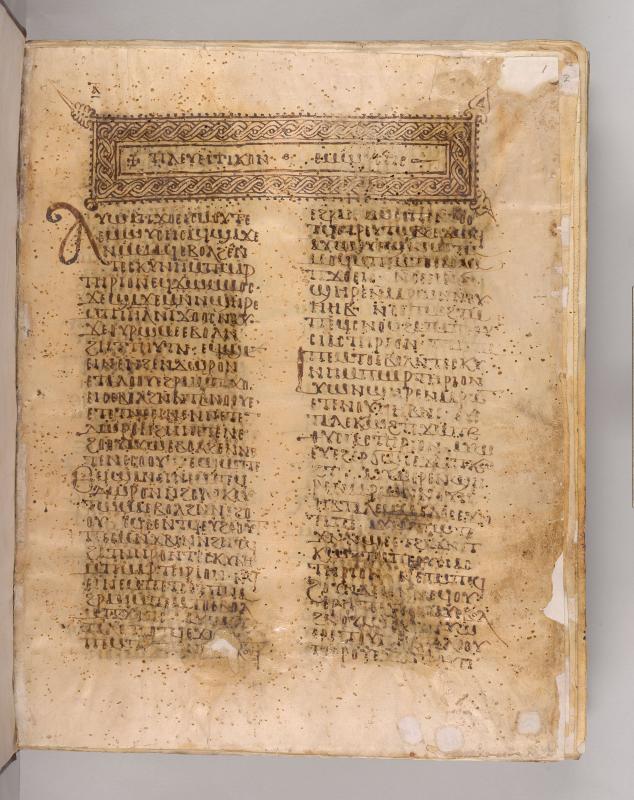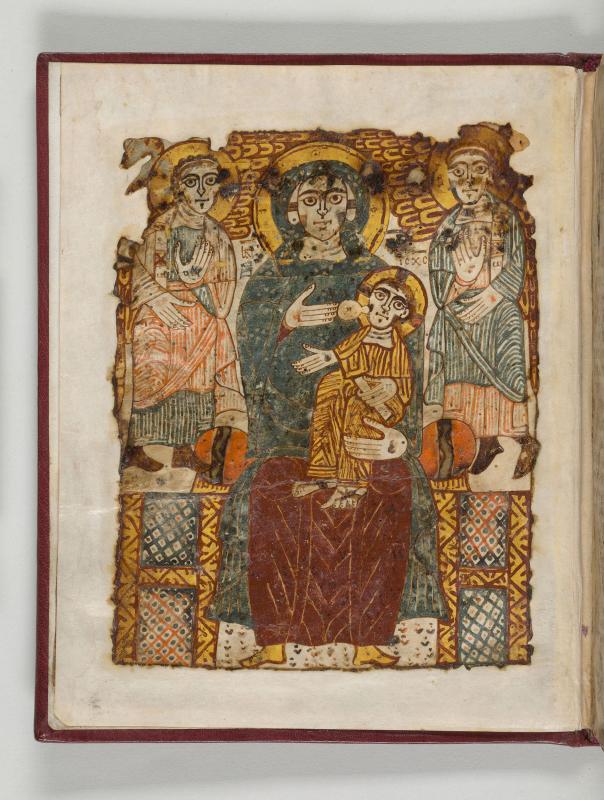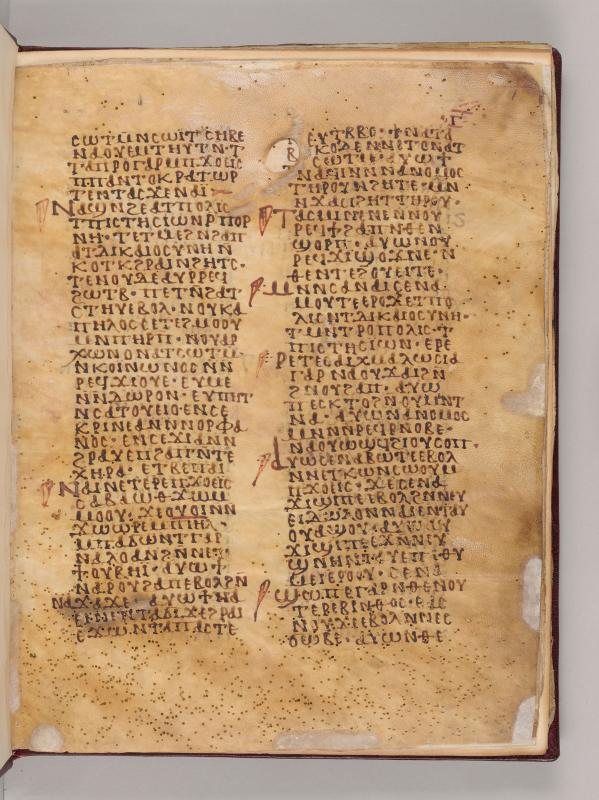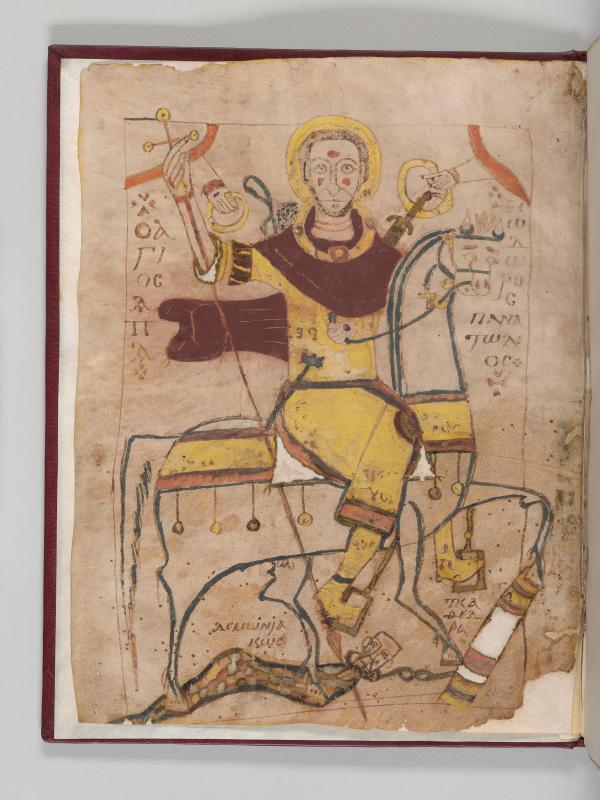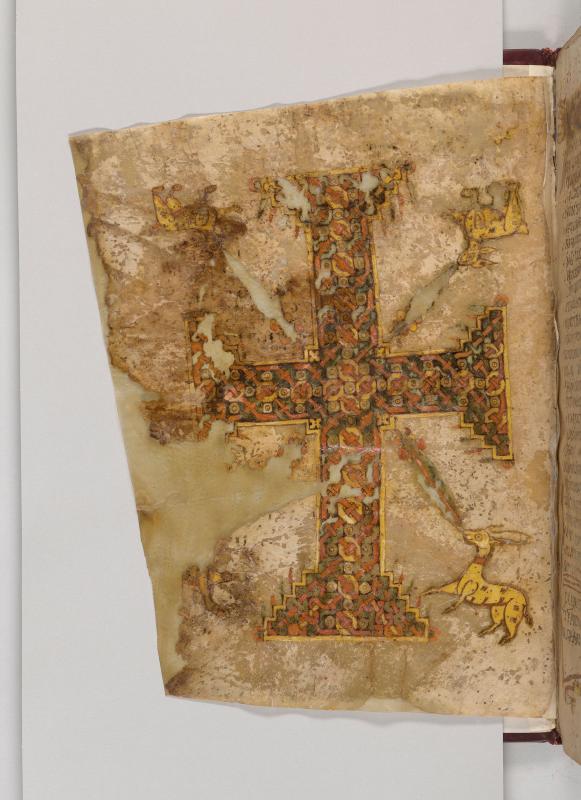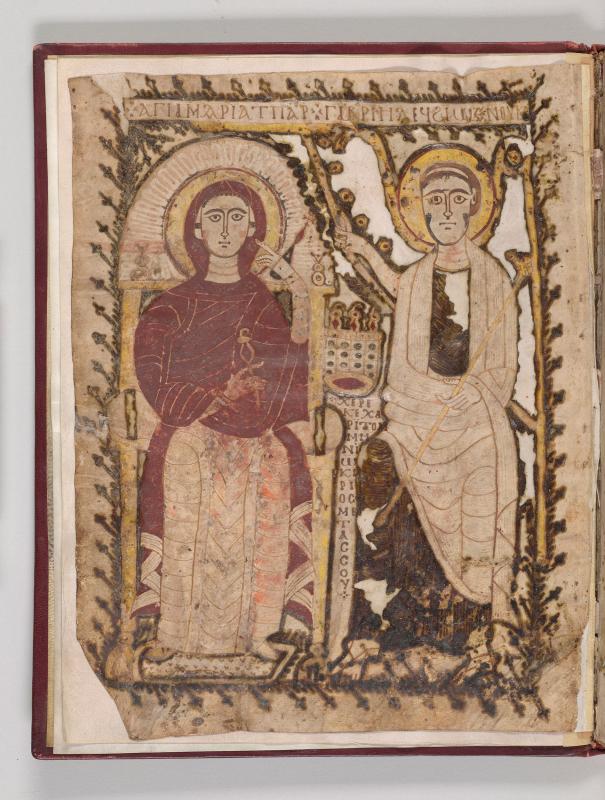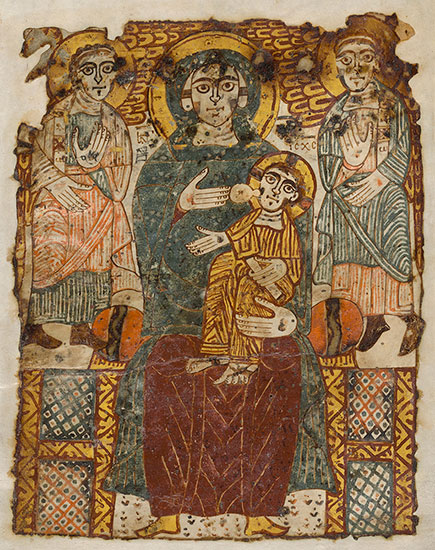
The Copts were native Egyptians who played an important role in the history of Christianity; their greatest contribution was the development of monasticism. When, in 1911, Pierpont Morgan purchased most of the sixty Coptic manuscripts found a year earlier in Hamouli (in the Fayum district of Egypt), he acquired the largest, oldest, and most important group of Sahidic manuscripts with a single provenance—the nearby Monastery of St. Michael. Nearly all the codices, which date from the ninth and tenth centuries, were found with their original bindings. (Morgan’s love of Egypt is well known; he was a frequent visitor.)
This acquisition instantly established the Morgan Library & Museum as one of the most important depositories of Coptic manuscripts outside of Egypt, rivaling the collections of Cairo, London, and Paris. The collection is remarkable not only for its early date and the number of its original bindings, but also for the large number of illuminations, including humans, divine figures, and crosses. Numerous colophons contain the names of scribes, donors, and recipients.


